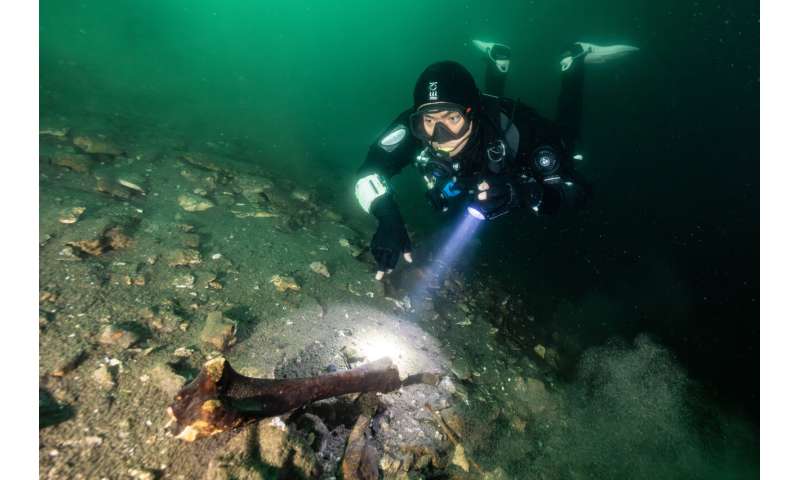Researchers and cave divers bring megafauna secrets to the surface to explore causes for their extinction

Cave diving is a recreation and emergency services skill that is not for the fainthearted, and without proper training the pastime can be potentially deadly.
While cave diving in Australia has experienced lows, there is much to celebrate and inspire new and experienced divers, which is one aspect the Cave Diving Association of Australia (CDAA) 50th Anniversary meeting will highlight from November 3-5 in the cave diving heartland of South Australia, Mt Gambier.
Among the hundreds of divers from around Australia joining the CDAA in the lead up to its national meeting this weekend is Associate Professor Julien Louys, Deputy Director of Griffith University's Australian Research Centre for Human Evolution.
Associate Professor Louys is no stranger to the cave systems surrounding Mt Gambier, having previously mounted several research trips to recover and study fossils collected from various cave sites from some of Australia's most mysterious animals—extinct marsupial megafauna.
In 2022, Associate Professor Louys was awarded $260,820 for his Australian Research Council Linkage project titled 'Deep time extinctions and environments in Australian underwater caves', which has helped him retrieve and study the deposits and environmental settings of fossils including the Diprotodon (giant wombat), Thylacoleo (marsupial lion) and the Sthenurinae (short faced kangaroo).
Accompanied by members of the CDAA and his team of researchers, Associate Professor Louys will perform dives at Englebrechts, Gouldens and Tank caves to explore whether those cave systems contain fossils, from what species, and what they can tell us about why they may have become extinct.
"That's one of the key things that we're trying to address with this project is to really place these megafauna in a particular landscape, to reconstruct in its finer detail as possible what the environments would have been like and how that may have changed through time and how that compares to the environments today," he said.
"Palaeontology is more than just studying dinosaur bones. Where the fossils come from, their context, age, and relationship to other fossils is critical information we use to understand past environments and how climate change impacted ecosystems in the past.
"That's one of the most long-ranging debates in Australian palaeontology, and global palaeontology: what happened to these megafauna?
"They all became extinct towards the end of the Pleistocene and one of the key debates is whether it was humans that caused their extinctions or whether it was environmental change that caused their extinctions.
"There's been a lot of conjecture or a lot of hypotheses that humans may have caused the extinctions because climate changes weren't severe enough or weren't impactful enough.
"But one of the gaps in our knowledge of that time, and of these species, is what sort of environments they actually lived in and what sort of ecologies these megafauna species had."
In June 2022, Associate Professor Louys played a key role with the South Australian Department for Environment and Water to develop some protections with the South Australian State Heritage Register on Green Waterhole in the Mt Gambier region.
He and the CDAA would like to see further protections on cave sites in the region, not only to protect the sites' fossil deposits and future research, but also to stem some of the increase in amateur cave divers who pose risks to the sites and themselves without adequate training.
"Some of these sites are at risk of being lost forever," Associate Professor Louys said.
"They provide not only a window into Australia's past, but their fossils can help educate and inspire Australians about our environments and are instrumental in understanding how past climate and environmental change affected ecosystems, fauna, and flora.
"The laws and legislation concerning fossil protection in Australia are not very clear, not consistent across states and territories and rarely if ever enforced.
"If these are lost or destroyed, they're gone for good, and whatever we might be able to learn about Australia and our future wasted."
Provided by Griffith University